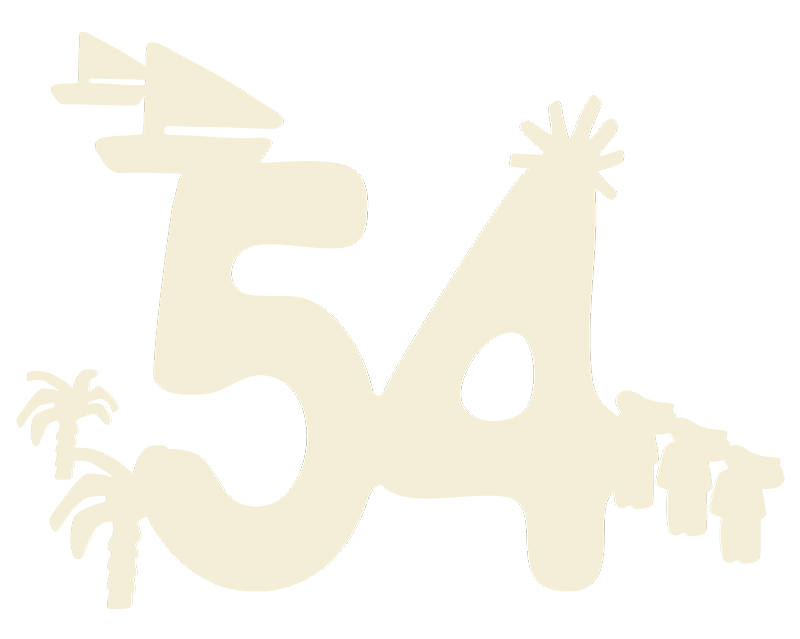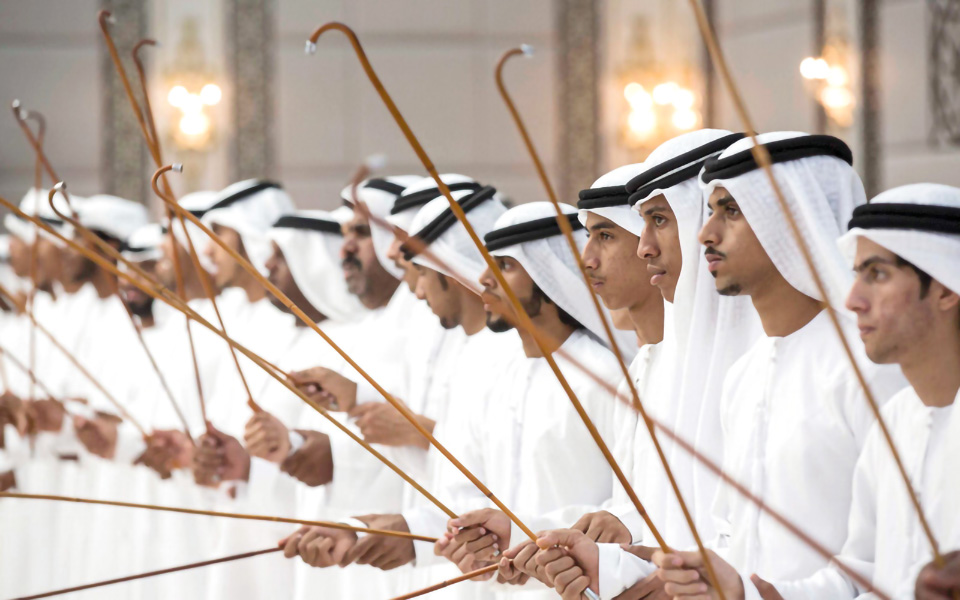

On National Day, we would like to share with you some of the traditional group performances that are showcased during national occasions. These performances are recognised by UNESCO as Intangible Cultural Heritage. They play a very important role in preserving cultural diversity in the face of growing globalisation.
The following traditional performances are among the most common in national celebrations:

Perhaps the best-known traditional performance in the United Arab Emirates, Al-Ayyala is an expressive cultural performance by men and boys who hold thin bamboo canes and move in unison to a steady drummed rhythm. Al-Ayyala involves dancing troupes, poetry, chants, and drummers. It is performed at weddings, national holidays, other celebrations, and welcome ceremonies for visiting heads of state.

Al-Razfa is a traditional performing art combining poetry and rhythm, deeply rooted in Emirati culture. These songs have been preserved for many years and continue to provide participants with a sense of identity and pride.
During the performance of Al-Razfa, two rows of men and boys face each other at about 10–20 meters apart, with drummers and other musicians gathered nearby. The performance begins with a handful of participants and quickly grows into a larger group. The two rows move in cohesion, singing verses of poetry to each other. Al-Razfa fosters a sense of community and shared identity among its performers, especially at social events and national occasions.

Al-Azi is characterized by the powerful voices of the poet and a chorus that “answers” him. The chorus members hold mock rifles and stand in rows behind the poet, who holds a sword. This call-and-response performance conveys unity and solidarity, while the symbolic weapons signify courage.
Al-Azi was regularly performed by desert communities across the UAE until the mid-20th century, when urban migration caused its decline. With support from the community, government authorities, and growing Emirati interest in heritage preservation, Al-Azi has since been revived. It is now regularly performed at weddings, national celebrations, religious holidays, and other special events.

Al-Taghrooda originates from the desert, mountainous regions, and rural villages of the UAE and is a form of improvised poetry. It is considered a beloved component of Emirati culture. Al-Taghrooda poetry is straightforward and avoids complex metaphors. One of its traditional roles was to document social and cultural history. Poems are frequently cited in daily conversations.
Today, Al-Taghrooda performances give Emirati audiences insights into their history, culture, and traditions. In contrast to the past, Al-Taghrooda is not always accompanied by chanting and is also enjoyed in written and recorded forms. Traditionally, poems are chanted around campfires, at weddings, camel races, and heritage and national festivals.

Al-Harbiya is a desert performance similar to Al-Ayyala and includes elements of Ardah, Ayyala, and Razfa. It is performed in groups along a single melodic line and traditionally without rhythm or musical instruments. Today, instruments such as the oud and the organ are sometimes added. Harbiya songs or poems are often upbeat, and some love poems have recently been incorporated into wedding performances.
The Harbiya is performed by men arranged in two opposite rows, which move rhythmically toward each other during the dance. A group carrying sticks or symbolic rifles performs movements between the rows. If the number of participants increases, the rows may be divided into three or four rows according to the group size.